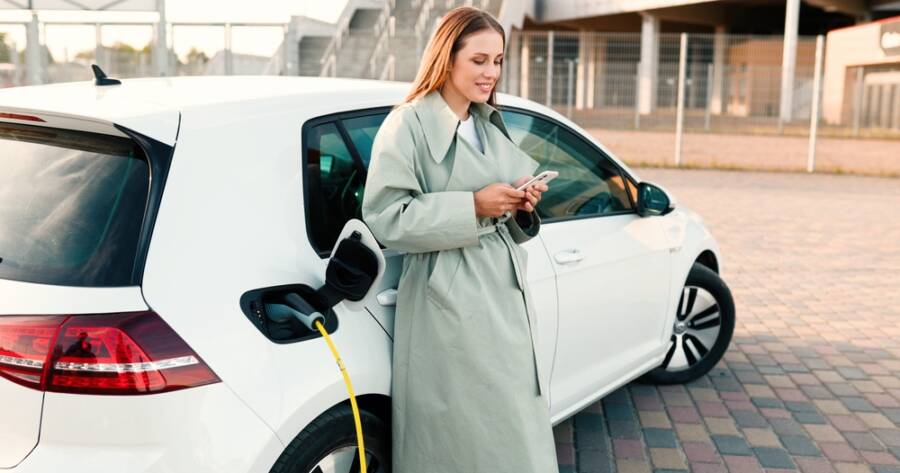Electric vehicles have moved from a futuristic novelty to a real, everyday option for drivers looking to cut fuel costs and reduce emissions. Whether you’re drawn to the savings, the smooth driving experience, or the environmental benefits, going electric is a big shift, and a smart one for many. But before making the leap, it’s important to understand what ownership looks like. From charging logistics to range and maintenance, a little preparation goes a long way in making the transition seamless.
Understand Charging Options and Where You’ll Plug In
Unlike gas stations, EV charging happens in a few different ways, and often at home. Most EV owners install a Level 2 charger at home for faster, overnight charging. These use a 240-volt outlet (like a dryer plug) and can typically charge a battery from empty to full in about 8 hours. Level 1 chargers (standard household outlets) are slower and best for emergency top-ups or plug-in hybrids.
Public charging stations are becoming more common, but availability varies by region. Fast-charging (DC) stations can power up your battery in under an hour, but not all EVs support this feature. Apps like PlugShare or ChargePoint can help you locate nearby stations and track availability. Before buying, check your routine—if you can charge at home and rarely need fast public charging, EV ownership is especially convenient.
Get Familiar With Range and Driving Habits
One of the biggest concerns for first-time EV buyers is range anxiety (the fear of running out of charge mid-drive). But with today’s models offering ranges from 150 to over 350 miles, most EVs comfortably support daily driving needs. Start by calculating how far you drive in a typical day. If your round-trip commute is under 100 miles, most EVs will suit you just fine.
That said, range can be affected by driving habits, weather, and terrain. High speeds, cold temperatures, or steep inclines can reduce efficiency. Planning road trips might require a little more forethought, but many EVs now include built-in navigation that factors in charging stops. With a little awareness, range becomes less of a worry and more of a manageable detail.
Maintenance Looks Different (And Simpler!)
EVs have far fewer moving parts than traditional gas-powered vehicles. No oil changes, no spark plugs, and no exhaust systems mean fewer routine service appointments and typically lower long-term maintenance costs. Brake pads even last longer due to regenerative braking, which uses the motor to help slow the car while recharging the battery.
However, EVs still need care. Battery health is key! Extreme heat, constant fast charging, and always running the battery to empty can reduce the lifespan. Tire rotation, cabin filters, and brake fluid still apply, and service centers that specialize in EVs are still catching up in some areas. Be sure to research which local mechanics or dealerships are certified to work on the model you’re considering.
Know the Incentives and Upfront Costs
Electric vehicles often come with a higher upfront price, but incentives can offset that cost. Federal tax credits (up to $7,500) and state or local rebates can make EVs more affordable. Some utility companies even offer rebates for installing home chargers. It’s worth researching all available programs in your area before finalizing a purchase.
Beyond incentives, factor in long-term savings. Charging an EV usually costs significantly less than fueling with gas, especially if you charge overnight during off-peak hours. Lower maintenance costs also add up over time. When comparing the price of an EV with a traditional car, looking at the total cost of ownership (not just sticker price) gives you a clearer picture.
Prep Your Home and Mindset for the Switch
Before bringing home an EV, make sure your setup is ready. If you plan to charge at home, consult an electrician about installing a Level 2 charger. Check that your electrical panel can handle the load, and consider smart charging options that let you control timing from your phone. If home charging isn’t an option, research your nearest public charging stations and get familiar with the apps or payment methods they use.
More than anything, going electric is a mindset shift. It’s learning to plug in overnight instead of stopping for gas. It’s keeping an eye on range in new ways and planning longer trips a bit differently. But once you make the switch, many drivers say they never want to go back. The quiet, smooth ride, and knowing you’re skipping the gas station makes the change feel worth it.
Powering a New Way to Drive
Switching to an electric vehicle isn’t just about adopting new technology. It’s about rethinking what convenience, efficiency, and driving can look like. By learning the basics of charging, range, and maintenance, you set yourself up for a smooth transition that fits your life.
The future of driving is here! With the right knowledge and setup, it’s one that’s cleaner, quieter, and surprisingly simple. Whether you’re buying today or planning ahead, going electric puts you in the driver’s seat of something better.

